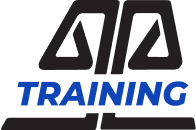Animal Welfare Handling
The course is applicable to all personnel responsible for the handling of livestock. By undertaking this course participants should expect to have a good understanding of the Australian Animal Welfare Standards and Guidelines (Beef and Sheep) and Model codes of practice for the welfare of animals.
Apon successful completion of this course all participants are expected to be able to successfully apply knowledge of good animal welfare practices into practical situations. The course applies to individuals who work under general supervision, exercise limited autonomy and have some accountability for their own work.
Successful completion will result in the following unit of competency being awarded - AMPLSK201 - Apply animal welfare and handling requirements.

To successfully complete this training course individuals must identify animal welfare issues and comply with the necessary requirements when handing animals.
Candidates must be able to demonstrate practically or apply knowledge of the following:
- identify sick or injured animals
- identify out-of-specification animals
- accurately complete records of livestock movement
- communicate effectively and appropriately with fellow workers (e.g. to exchange information with stockperson)
- identify signs and causes of stress in animals
- comply with workplace procedures and requirements for handling livestock and minimising livestock stress
- maintain flow of livestock with minimal livestock stress
- identify the relevant sections of the animal welfare standard and code
- identify relevant regulatory requirements
- workplace procedures for receival and/or dispatch of animals
- workplace requirements for maintaining flow and order of animals
- impact of stress and injury on the animal
- impact of stress and injury on product quality, including carcases, hides and skins
- stock identification systems including National Livestock Identification System (NLIS)
- lot identification of stock and its importance with regard to trace back
- workplace health and safety hazards of handling stock
- feed and water requirements where relevant
- the relevant sections of the animal welfare standard and code
- relevant work instructions and Standard Operating Procedures (SOPs) associated with tasks undertaken
- customer and community expectations
physical conditions:
- skills must be demonstrated in a workplace where livestock are handled for processing, or an environment that accurately represents workplace conditions
resources, equipment and materials:
- real animals for handling
- PPE
specifications:
- workplace procedures, including advice on safe work practices and animal welfare and safety
relationships:
- interactions with work team.
